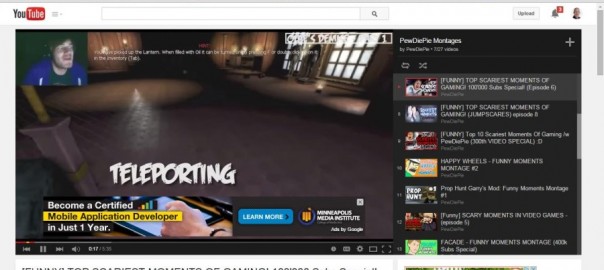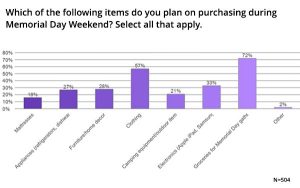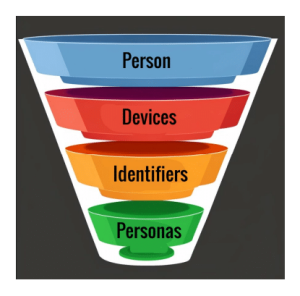There I found myself, roused from my slumber in the dead of night by a muffled chorus of voices coming from the other room. Bleary eyed and disoriented, I stumbled out of bed and headed to the bedroom door, reaching for any kind of weapon to fend off the would-be assailants who managed to break into my home. Groping in the darkness, the best I could do was a plastic reproduction of the Millennium Falcon (hey, it’s hard plastic). “Well, it’ll have to do,” I muttered to myself as I prepared for battle. Easing open the master bedroom door I heard the voices getting louder, echoing up the nearby stairwell. With a sudden burst of adrenaline I let out a primordial yelp and bounded down the stairs, brandishing my toy, ready to face my foe head on. To my surprise, what I found was a little boy of eight sitting on the stairs peering into a Kindle tablet, his startled countenance bathed against the glow of the tablet screen. No burglars here, just my eldest son enjoying a little me time on the stairwell in the middle of the night. “Sorry, dad, couldn’t sleep; you either, huh? I’m watching this sweet episode of Clash of Clans Attacks by my favorite YouTuber, Galadon. Come check it out!”
Such was my introduction to the role of the YouTuber in that growing area of digital known as social influence marketing.
The Rise of the Social Gamer
Once the provenance of pimply-faced teens hunched over unwieldy consoles in musty basements, the Internet era has elevated social gaming to an international spectator sport, and promoted its leading practitioners to megastar status. Featured on social video streaming networks like Twitch.tv and YouTube, today’s top gamers command a loyal following of predominantly Millennials and Gen Zers that can (and often does) reach into the millions.
Taken as a whole, these gamers reflect the changing nature—and growing power—of social influence marketing.
Take the case of one Felix “PewDiePie” Kjellberg, a 25-year-old Swedish gamer who, with over 37 million subscribers and billions of views, holds the impressive distinction of running the highest trafficked channel on YouTube. Each episode of his Let’s Play videos features a screen shot of the video game as he plays it, while the top corner relays live footage of his reactions. Here’s a screenshot of one of the episodes:

Admittedly, I do think there is something inherently silly about the idea of watching a video of somebody else playing a video game, but hey, this is coming from a guy who thought sticking little colored plastic pieces into a black board with holes and a light shining through it was really cutting-edge entertainment. And besides, who needs Lite Brite when you’ve got PewDiePie.
YouTubin’ Ain’t Easy
Lest in gest we get ahead of ourselves, it would be a serious mistake to dismiss social gaming as a passing fad. For now, at least, it’s big money. Writing on the subject in an article for Christian Science Monitor a little over a year ago, Chris Gaylord noted how many of the top 50 YouTube channels air the same kind of Let’s Play videos, and the leading broadcasters can earn six-figure incomes from advertising on their channels.
Live streaming video gaming platform Twitch.tv (now owned by Amazon) draws in over 45 million unique visitors per month and enjoys more prime-time viewers than MTV, Syfy, TNT, and AMC. Moreover, the average Twitch viewer stays tuned in for 106 minutes per day.
Beyond, or should I say beneath, PewDiePie, you have a growing number of who could be characterized as “2nd tier” gamer celebs like my son’s favorite, Galadon, who has positioned himself as a leading practitioner of the popular mobile video game Clash of Clans. His YouTube channel, Clash of Clans Attacks, has over 600,000 subscribers. Buoyed by the comical stylings of his sidekick Peter17$ (the self-proclaimed foremost authority on Clash of Clans), it’s not uncommon to find Galadon creating individual episodes that generate literally millions of views. That makes them highly promotable: watch any one of these episodes and you’ll find a pre-roll ad from a leading brand. The few times I clicked I was served ads from Windex, Outback Steakhouse, and Paramount Pictures.
Mainstream Celebrity vs YouTube Personality
Over and above their usefulness to online advertisers, it’s fascinating to see how much influence YouTubers wield with today’s youth. A much ballyhooed survey conducted in July 2014 by Variety magazine found the five most influential figures among Americans ages 13-18 were all YouTubers. Yes indeed, mainstream celebs like Jennifer Lawrence and Seth Rogen took a backseat in popularity to the likes of PewDiePie and Smosh.
Significantly, the survey found that YouTube stars scored much higher than traditional celebrities across a range of characteristics considered to have the highest correlation to influencing purchases among teens. YouTubers were judged to be more engaging and relatable, with teens finding it easier to have an intimate and authentic experience with them over more distant mainstream celebs. Teens also tend to enjoy YouTubers’ sense of humor, lack of filter, and risk-taking spirit.
The findings of the Variety survey were underscored by a more marketing oriented study published by digital content creator and distributor DEFY media in March of 2015. Its ACUMEN Report: Constant Content examined the content consumption habits of teens and young adult Millennials. Data from the study confirmed the apparent role model status of YouTubers in relation to the youth of today. Among the younger 13-17 segment , 32% said they are more likely to look up to a YouTube personality over traditional celebrities, while the older 18-24 set reported a slightly higher affinity towards TV and movie stars (36% vs. 26% for YouTubers). Interestingly, 52% of that same group reported they still “feel closer” to their favorite YouTubers, with nearly half (46%) stating “they like the same things I do.” That figure rose to 61% for 13-17 year-olds.
Here’s the key stat: fully 63% of all study respondents stated they would try a product or brand recommended by a YouTube personality, while only 48% reported that TV and movie star power matters, irrespective of age.
Score one for PewDiePie.
YouTuber Wisdom
Affinity leads to connection, and connection leads to conversion. If Galadon was to suggest a cool new game for my kids to buy, I guarantee I’d be hearing about it within minutes. It’s easy to see how this phenomenon could extend beyond gaming. Much as brands once enlisted the talents of famous sports stars like Mean Joe Green to sell product, it’s easy to see how companies may soon turn to the likes of PewDiePie, Smosh, or Galadon to do the same. With digital, you also have the added element of the embedded ad—a commercial within a commercial, if you will—to really drive the message home.
So what does it all mean for marketers? With the majority of us struggling to produce online video content that garners views in the hundreds or occasionally thousands, perhaps we can learn something from those who regularly earn millions. Combining schoolyard humor with glaring transparency, abject goofiness with disarming relatability, these YouTubers have found a way to tap into the collective Zeitgeist of their audience to deliver content that is both enjoyed and valued; by doing so, they create real and lasting influence. Moreover, they’ve managed to build this influence organically by activating both their own and their audience’s passions, all while entertaining and educating.
We could do worse than the YouTubers.
(273)








